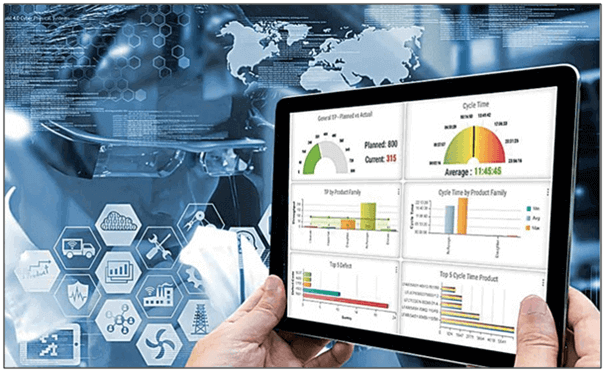Procurement departments of all companies’ sizes recognize that controlling both direct and indirect spending is an important part of keeping costs down. By creating value and promoting the sustainable competitive strength for the organizations. In the past decades, most organizations have primarily concentrated on maximizing management on direct spending. As it is directly linked to the raw materials, products, finished goods and services required for production.
It is simple enough to create a connection between the organizations expenditure on direct materials, which affect its overall efficiency and profitability. Indirect procurement requires a more complex and strategic approach to be properly valued and controlled. Indirect spending encompasses all that finances day to day business activities, beyond the development of products that the company provides to its consumers. It can account for between 25% and 40% of your company’s overall expenditure. Let us look into procurement techniques to manage indirect spend in the organization.

Table of Contents
Developing a Strategic Sourcing Plan
A business seeking to optimize its indirect procurement processes must concentrate on establishing a strategic sourcing strategy for both direct and indirect spending. To begin with, let’s look at the picture as a whole to identify savings opportunities in your supply chain. Examine areas where more meaningful and collaborative vendor partnerships could be established. Next, do a detailed analysis of all indirect expenditures. This will help to establish a plan that includes operational priorities, market analysis, a comprehensive SRM strategy and indirect performance requirements for suppliers. This could include an alternative approach to contract management and processing of purchases and invoices. It can also include a new procurement strategy for purchasers within the context of an organization or the implementation of a preferred supplier program for indirect procurement.
Spend Analytics
The use of data spending analysis to reduce costs, increase efficiency and improve the relationship with the supplier. These results underscored the value of the cost reduction policy of the organization, together with training and development program to benefit both the workers and the company as a whole. It includes item purchased over a period of time, item description, consumption, prices and related suppliers. When collecting expenditure data, company may obtain data from numerous sources. ERP systems, purchasing order statements, accounting journals, supplier reports, and sales records. Sales records are an interesting source to combine with historical data on spending as they provide a forward-looking view. This makes them useful for forecasting potential transactions and trends in the spending profile.

Educating Employees on Indirect Spend
Although almost every organization recognizes the essential role of direct spend control, many organizations fail to pay the same level of attention to indirect spend. Part of the issue is that accountability is divided across many departments. Everyone from the higher management, manager of the marketing team to operations side and sales department contribute to indirect spending. By monitoring and tracking certain general performance metrics, procurement managers have easier access to evaluate contract compliance, consumer satisfaction, cost competitiveness and encourage quality improvement. Increasing globalization, increasing market volatility and increasingly complex pricing conditions are just some examples of changing external factors. Develop directed purchasing catalogues to make it easy for workers to choose from a list of company-selected products and quickly create a requisition form to be sent to procurement department for approval.
Improving Supplier Management
Indirect procurement focuses on the control of expenditure, not on the advantages of cooperation between suppliers. The relationships with suppliers or manufacturers are transactional and emphasizing on the competitive costs. Indirect spending includes multiple suppliers and it can be difficult to handle all contracts. You can end up overpaying without careful analysis and management. Take the time to study and categorize the organization’s indirect expenditure in all locations and divisions. Group products and classify main suppliers for each category. Review the purchasing history of related products around the businesses and then seek to negotiate advantageous arrangements with suppliers based on the volume prices or find redundancies and areas for cost savings. There may also be a situation in which a company depends on just one supplier for its products. If the supplier is unable to comply with the required standards, the purchaser may assist the supplier in improving its services or implement processes to improve its procurement cycle.

Contract Management
By applying contract management, companies will create better relationships with clients, vendors, strategic partners and investors. A contract consists of negotiating the terms and conditions. Contract allows you to track amounts and quantities committed against contract budgets, restrict transactions to a given list of goods, enforce pricing with contract terms and limit total expenditure to a specific supplier. Improving market results by clarification of risks, obligations and opportunities in the contract. Check and review all suppliers’ contracts on a regular basis. Identify and take control of all contracts across your organization, which also means taking time to analyze, adjust and consolidate as necessary.
Use of Technology
Main problems for an organization for indirect spending typically have complexes, fragmented criteria. It is often generated by a large number of users including its internal non-procurement departments from the company. In order to streamline and simplify the process, indirect procurement teams concentrate and strive to create an uncomplicated purchasing experience. Choosing E-procurement solutions is an easy-to-use indirect procurement technology. Linking all interfaces to the company ERP systems to streamline the process for both Direct and Indirect spend approach to fully utilize the single platform system.
Building Trust and Rapport with Stakeholders
Procurement team may be able to do the above, but may run into problems that will keep new policies and procedures in place without the help of your organization’s stakeholders. Building a great partnership with the business stakeholders will be very necessary in ensuring that business units stick to the sourcing strategies. To achieve it, this should include your team, your stakeholders, and our suppliers. Via a people-first relationship, you can develop better strategies, generating more value, building a stable and agile supply base. By improving this approach through enhanced procedure, visibility, technology and supplier management. You will find savings you never knew were there while having real bottom line effects.
Conclusion
Although indirect spending is more difficult to track, monitor and thoroughly evaluate. Implementing best practices in Management systems (ERP) can make a big difference in the bottom line of your organization. Understanding indirect spending will help the organization assess its cash flow and optimize savings. It is an important part of procurement that can never be ignored.
References
Chris Lim Siao Yian, DPSM. (2020). “Spend Data Analytics for Effective Procurement” Retrieved from SIPMM: https://publication.sipmm.edu.sg/spend-data-analytics-effective-procurement/, accessed 14/12/2020.
Earnest Lim Joon Kiong, DPSM (2019) “Six Essential Strategies for Sustainable Procurement” Retrieved from: https://publication.sipmm.edu.sg/six-essential-strategies-sustainable-procurement/, accessed 15/12/2020.
GEP (2019) “5 Differences Between Direct and Indirect Spend” Retrieved from: https://www.gep.com/blog/strategy/differences-between-direct-and-indirect-spend, accessed 15/12/2020.
Hugo Britt (2020) “8 Ways to Achieve Indirect Spend Management” Retrieved from: https://una.com/resources/article/6-ways-to-achieve-indirect-spend-management/, accessed 14/12/2020.
Sean Bliss (2018) “A Simplified Approach to Indirect Spend Management” Retrieved from: https://spendmatters.com/2018/11/29/a-simplified-approach-to-indirect-spend-management/, accessed 14/12/2020.

